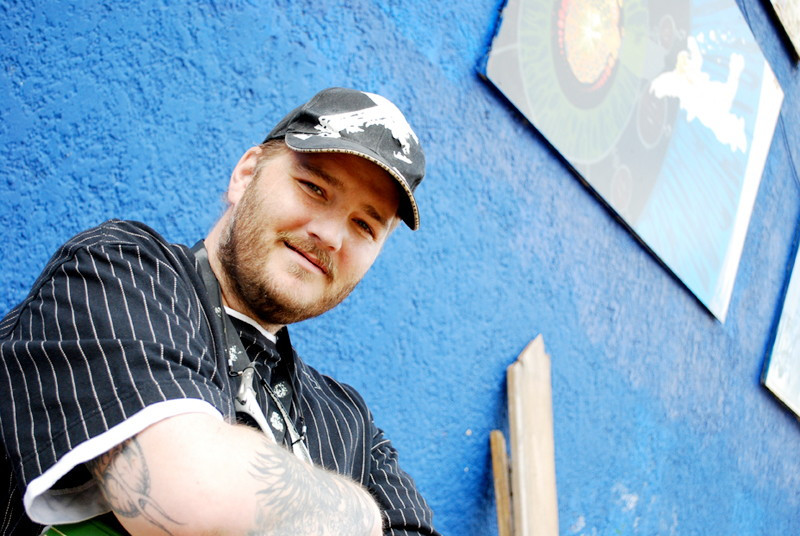Five years clean, and counting
The Red Road Lodge is turning people’s lives around with safe rooms and effective programming
The Red Road Lodge, an alcohol and drug-free rooming house, is celebrating its five-year anniversary this month. Thanks to volunteer support, improved funding, effective programming and constant renovations, the Red Road Lodge continues to be an urban oasis for the impoverished in Winnipeg’s downtown.
Anthony Glas, 39, is a recovering addict and has been staying at the Lodge for two months. Glas was a resident at the Lodge two years ago and said the environment at Red Road Lodge is much safer and healthier than his previous home, the Garrick Hotel.
“I got sick and tired of drugs, alcohol, crack – not doing them, but it was hard for me to stay abstinent when it was always around me, it was spinning around in my head. I had to run and hide,” said Glas. “I actually came here this time begging to get in.”
Red Road Lodge sits at 631 Main Street, the former home of Winnipeg’s most notorious and dangerous hotel, the Occidental. Chair of the board for Red Road Lodge, Richard Walls, purchased the Occidental in 2002 hoping to turn the gritty hotel into transitional housing, a place of healing and recovery for Winnipeg’s downtown community. Walls said that making the Red Road Lodge a dry facility was one of the first orders of business.
“There was a time, when I first bought this hotel, that the fire department, ambulance and the police would be here every single day,” said Walls. “We haven’t seen an ambulance here in two or three months, it’s totally changed.”
The Lodge is home to 44 residents, most of who are recovering addicts or suffer from mental disabilities. Each resident occupies a private room, approximately 180 square-feet, complete with a private bathroom, shower, microwave, half-fridge and electric frying pan. The Government of Manitoba provides funding for the rooms, so residents do not have to pay.
The third floor of the Lodge is currently under renovation. Volunteers from Mennonite Disaster Services are busy installing new floors, dry wall and insulation in the suites, just one of the many changes Glas has noticed during his second stay at the Lodge. Glas said that aside from improved housing facilities, the Red Road Lodge is even safer than it was two years ago.
“It’s so safe to live here, I’m a 250 pound man and I don’t need to walk down the hall and have some drunk come at me and have to apply force on him [as was the case in other hotels],” said Glas.
Glas said that although security staff were on site at the Lodge two years ago, they simply couldn’t be everywhere at once. The addition of security cameras, Glas said, has greatly improved the safety of residents.
But Red Road Lodge provides residents with more than just a safe, secure and healthy environment. Residents are able to utilize a massive arts and crafts workspace, library, pool table, media room and computer lab – all occupying the main floor, the former home of the Occidental’s bar and VLTs. Such amenities allow residents access to constructive activities and provide them with space to socialize.
“Socialization and social integration is so important for these people. If they just have rooms, they sit in there and don’t socialize. We get them learning together and to trust each other,” said executive director Jane Meagher.
Meagher runs two in-house programs, REACH (Red road Education Art Culture Homeless Initiative), an art therapy program, and START (Sobriety Training And Recovery Program), a program designed to teach residents essential life skills.
For people like Glas, however, Red Road Lodge is much more than a roof over their head and free art classes. The Lodge serves as a vital component in making the difficult transition from homelessness, poverty and addiction to recovery, rehabilitation and employment.
“I love it here. There’s lots of support, it’s a safe environment for myself. I’m a recovering addict and these walls are what helps me keep clean,” said Glas.
Published in Volume 63, Number 30 of The Uniter (August 13, 2009)







